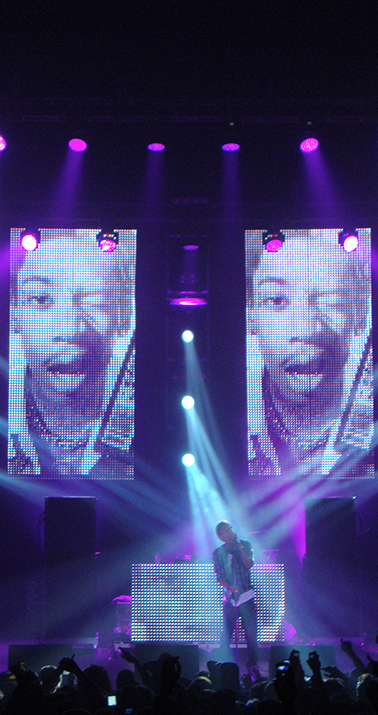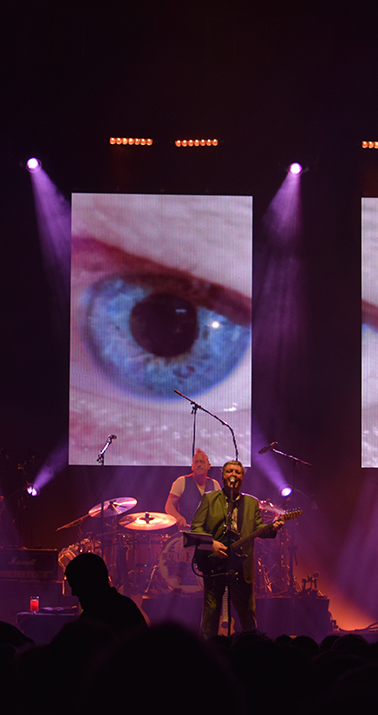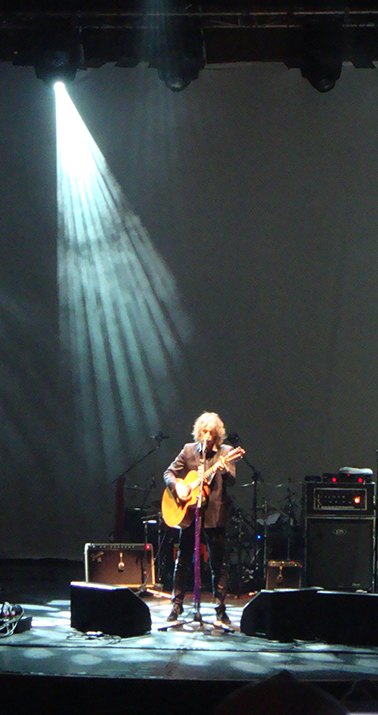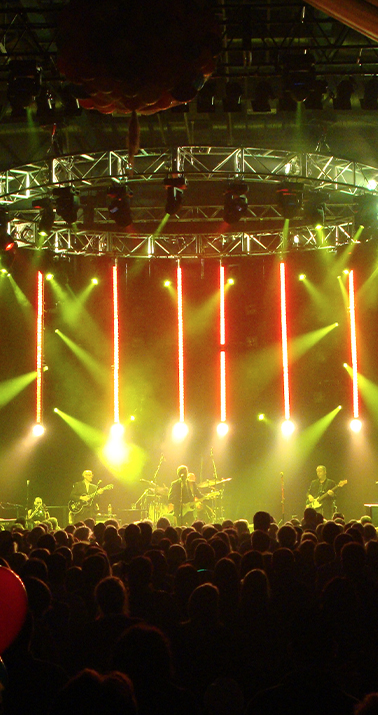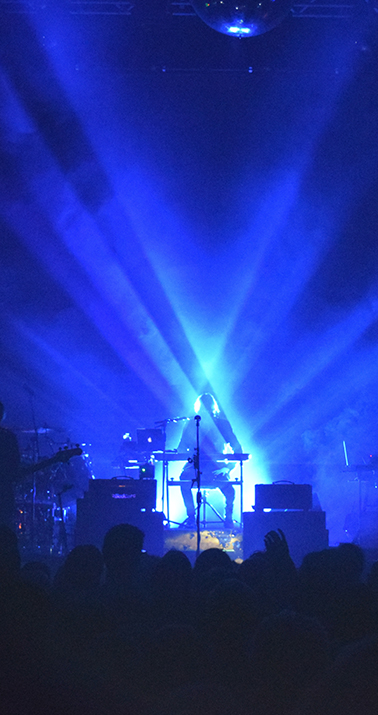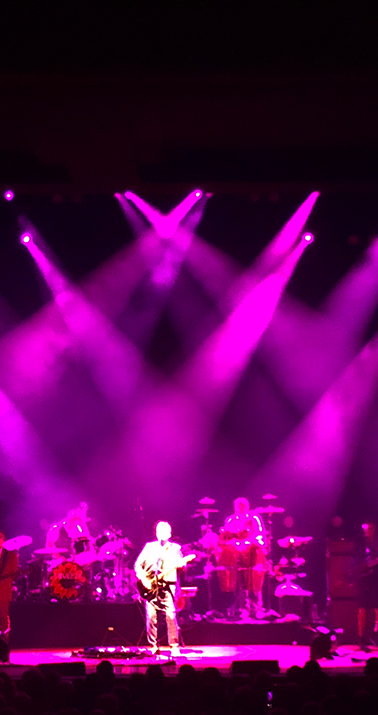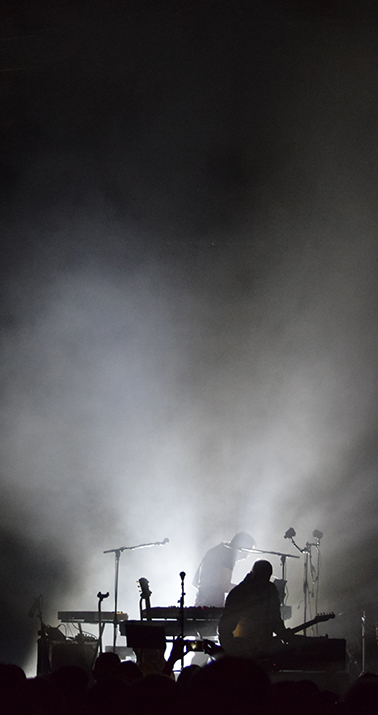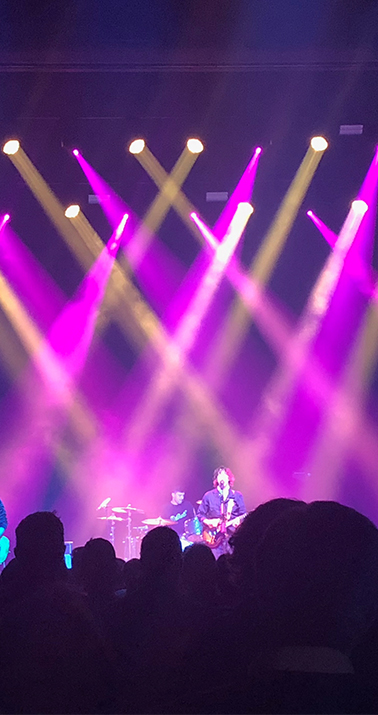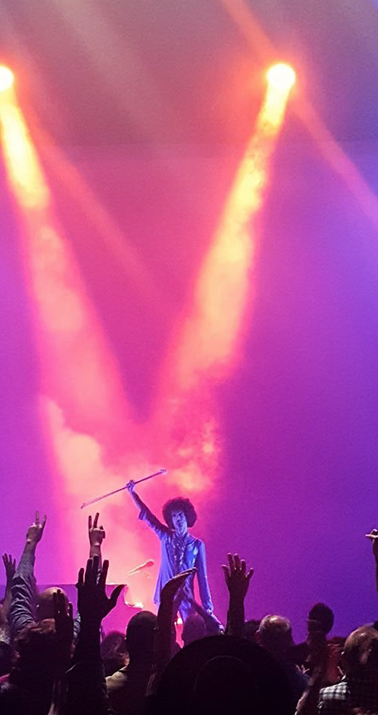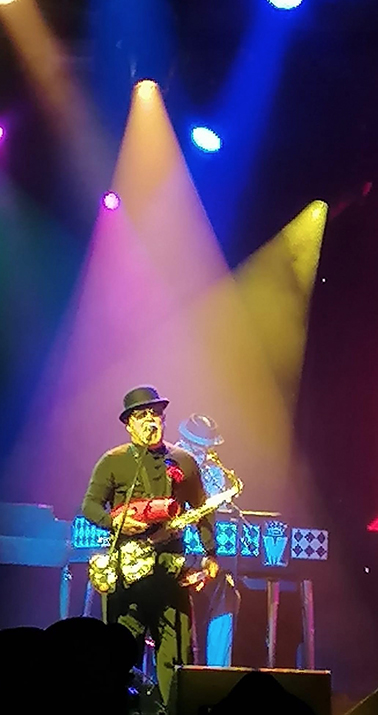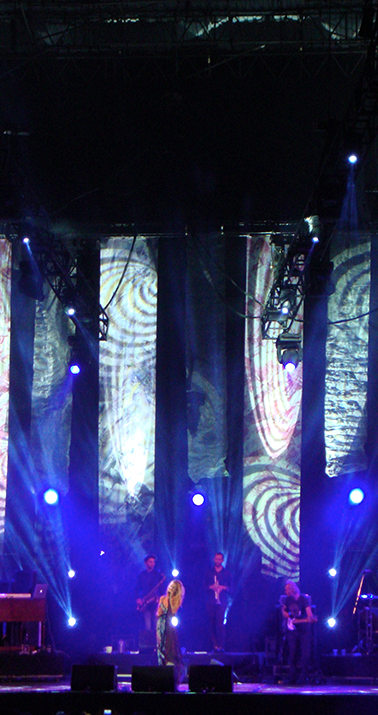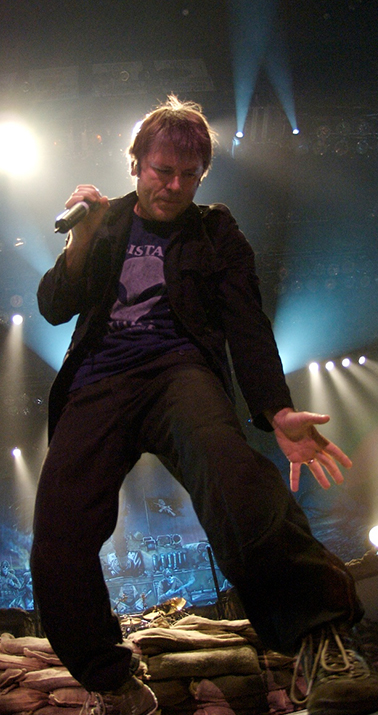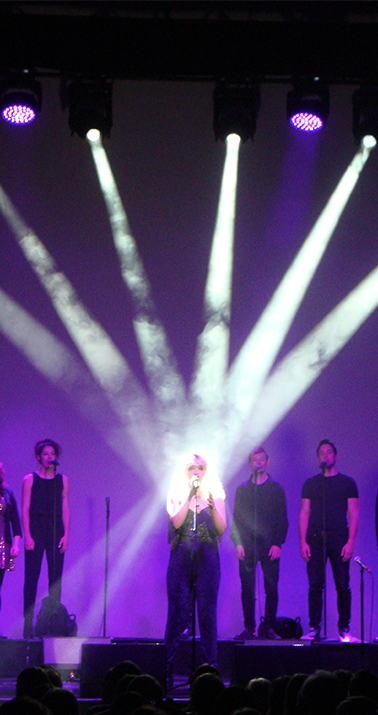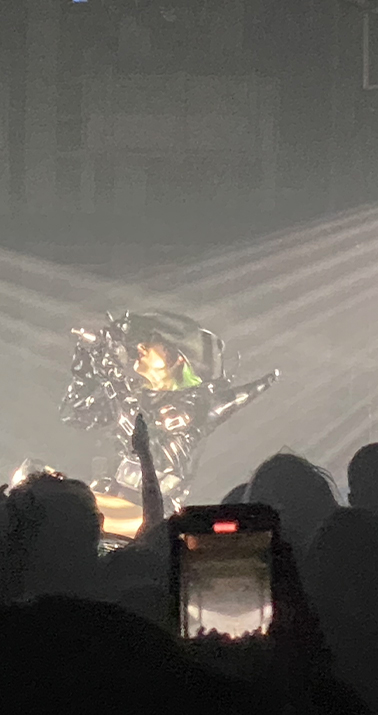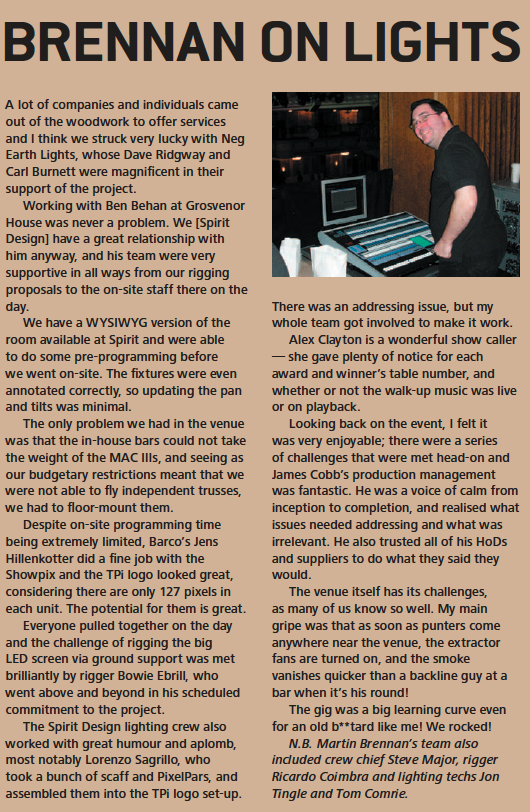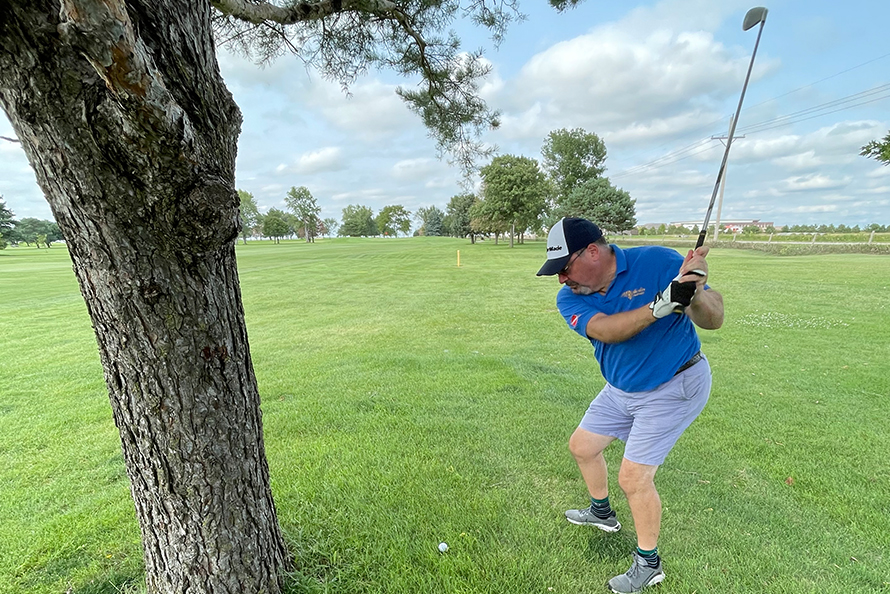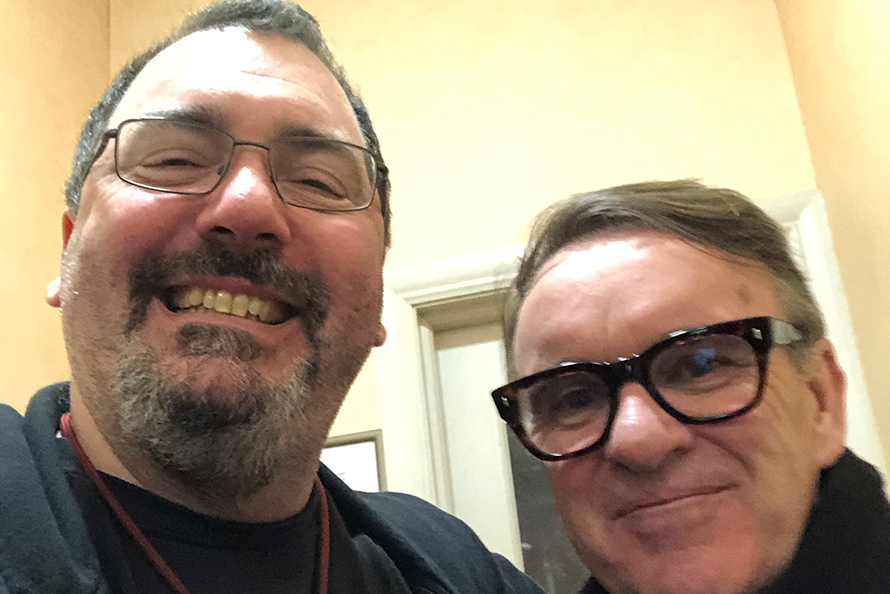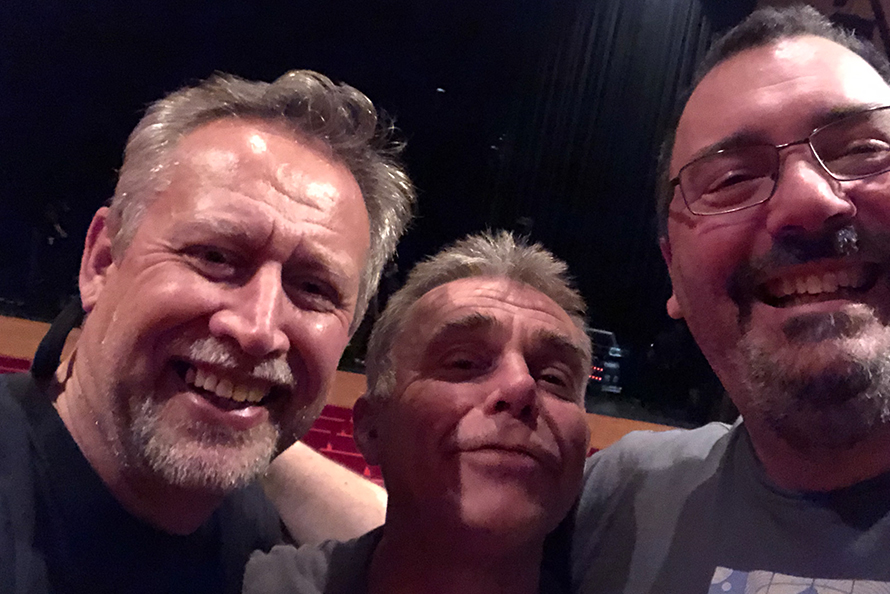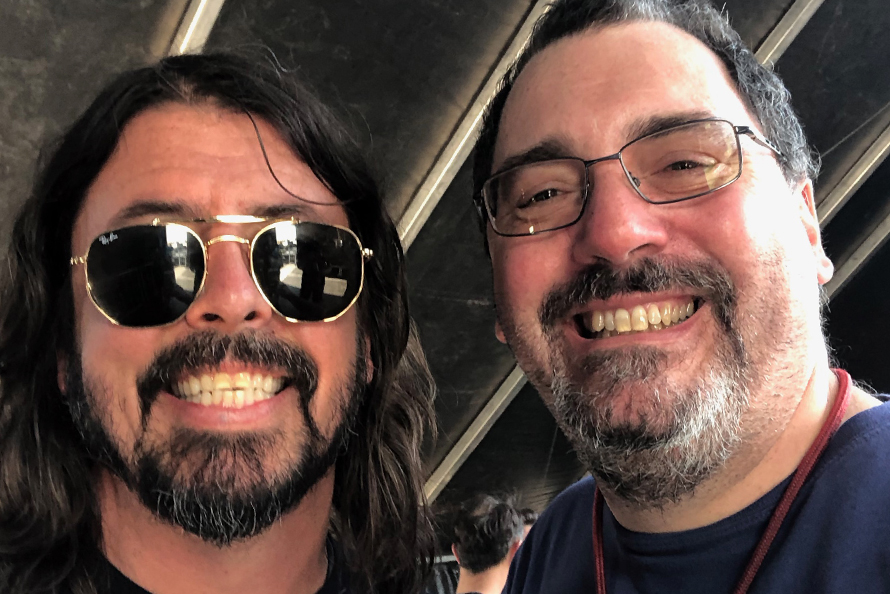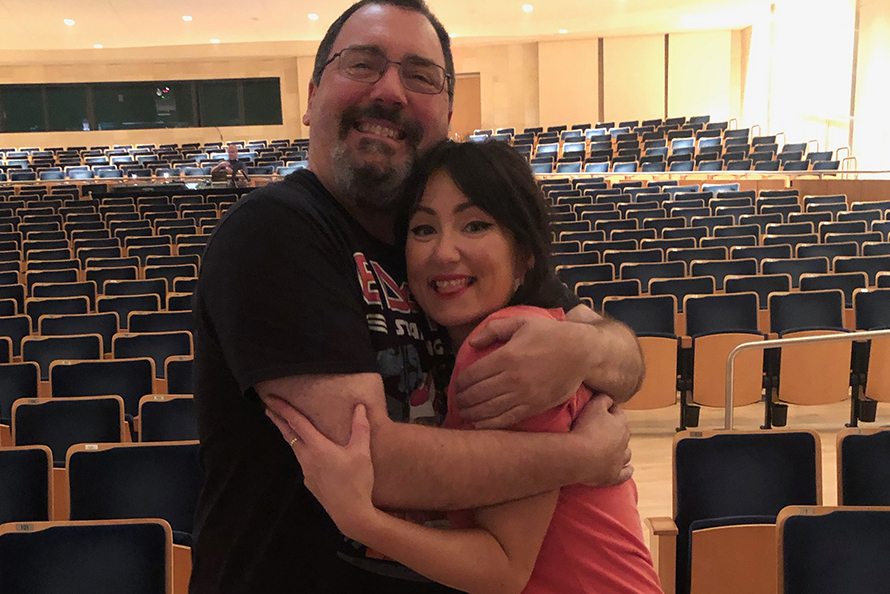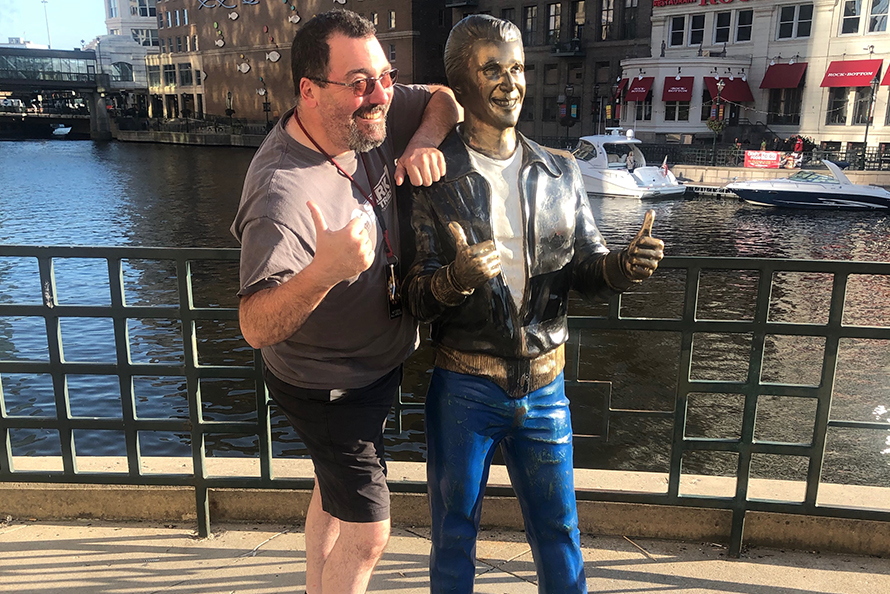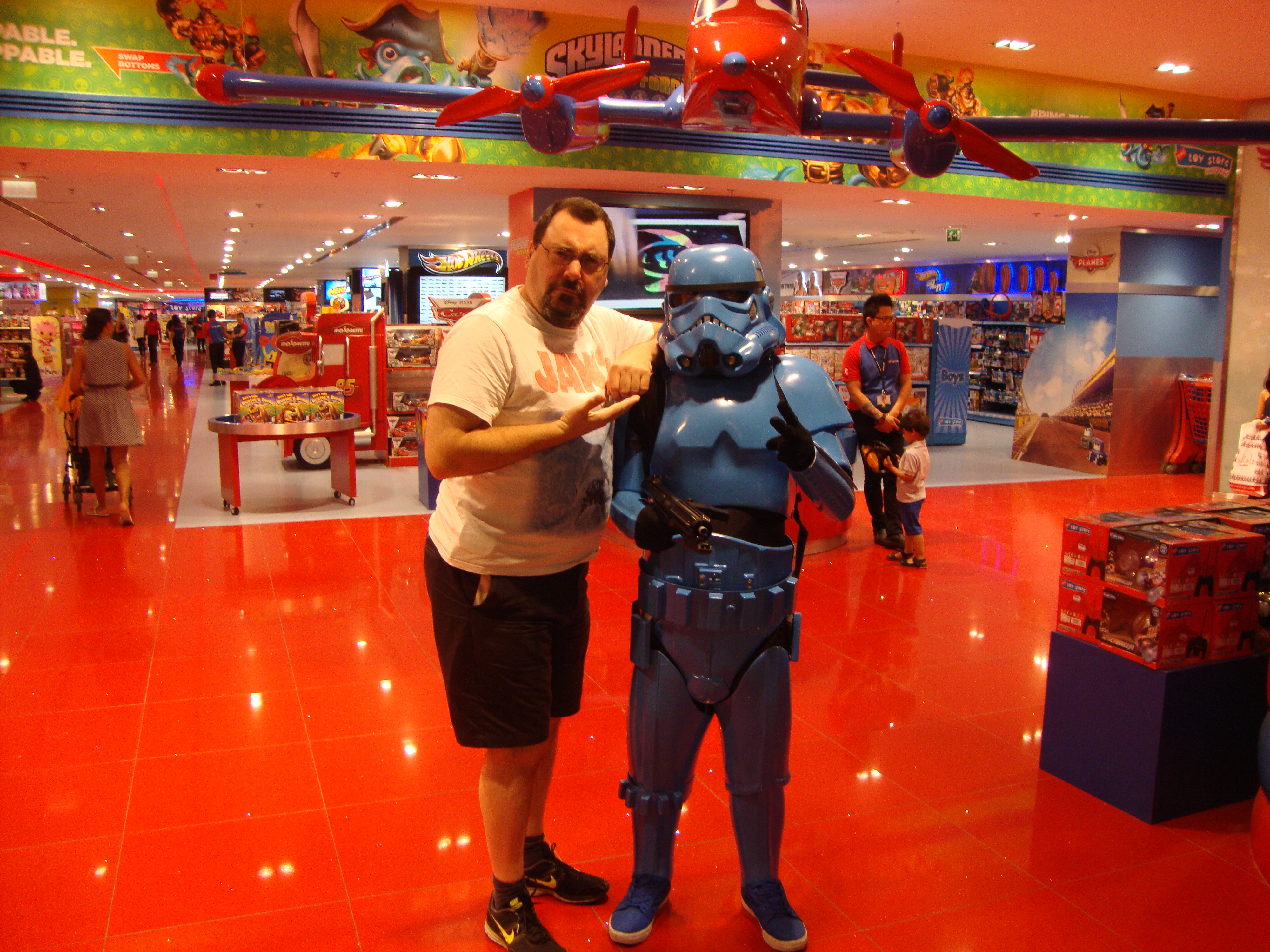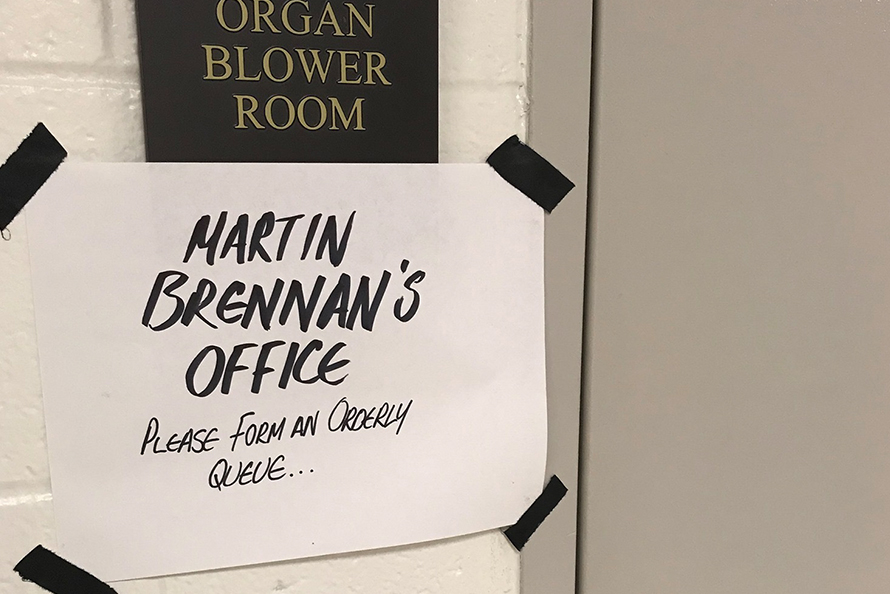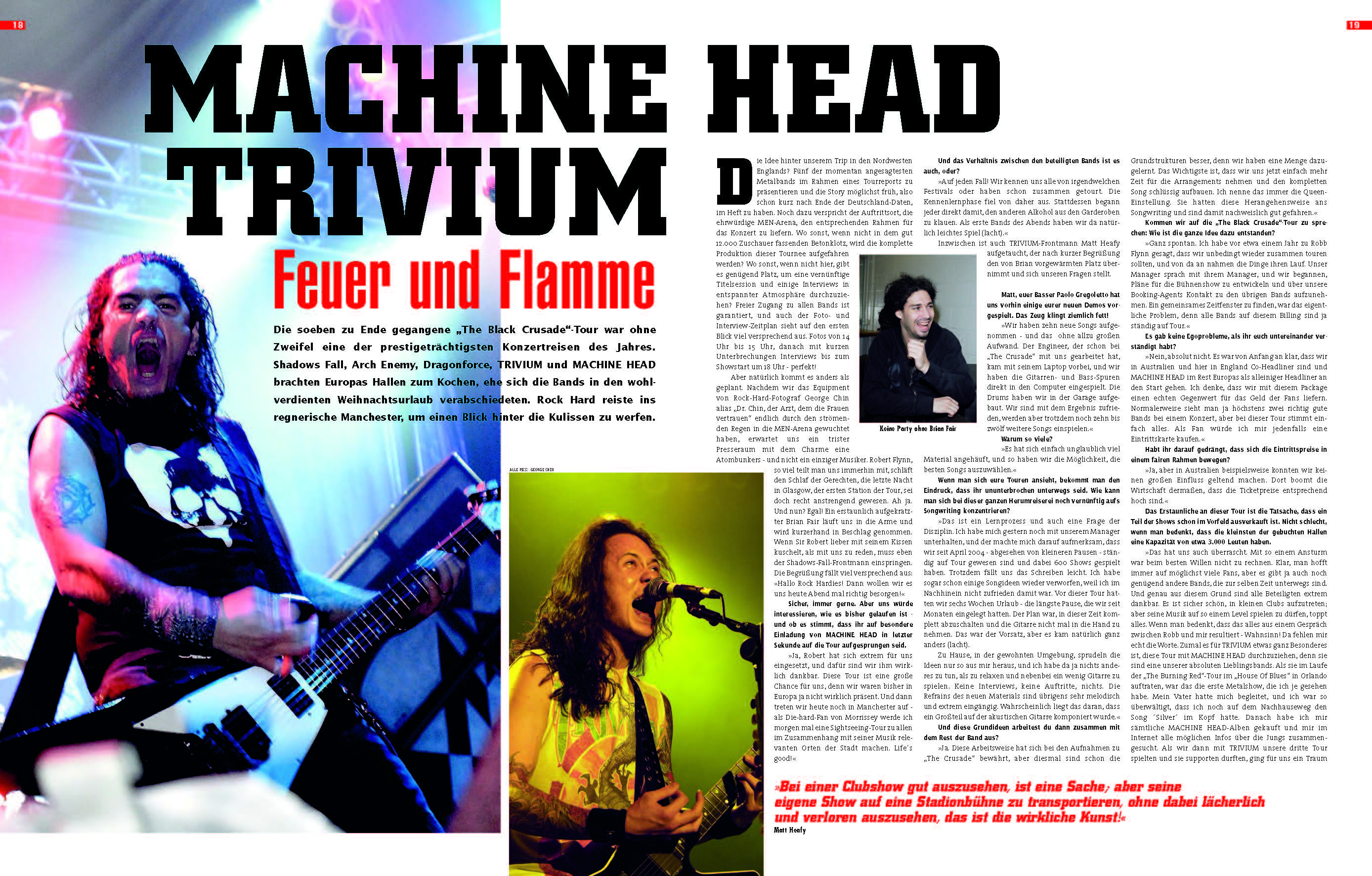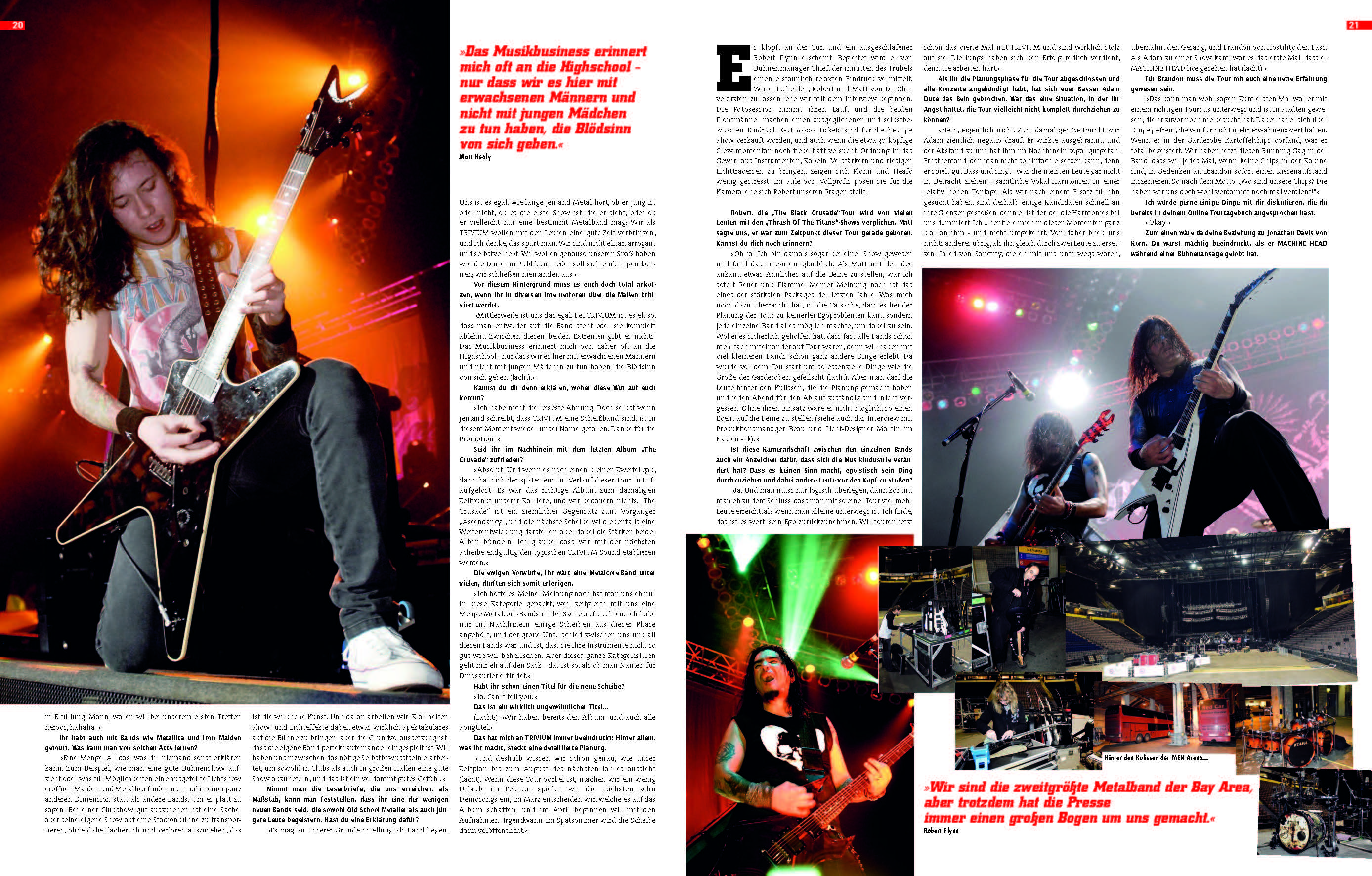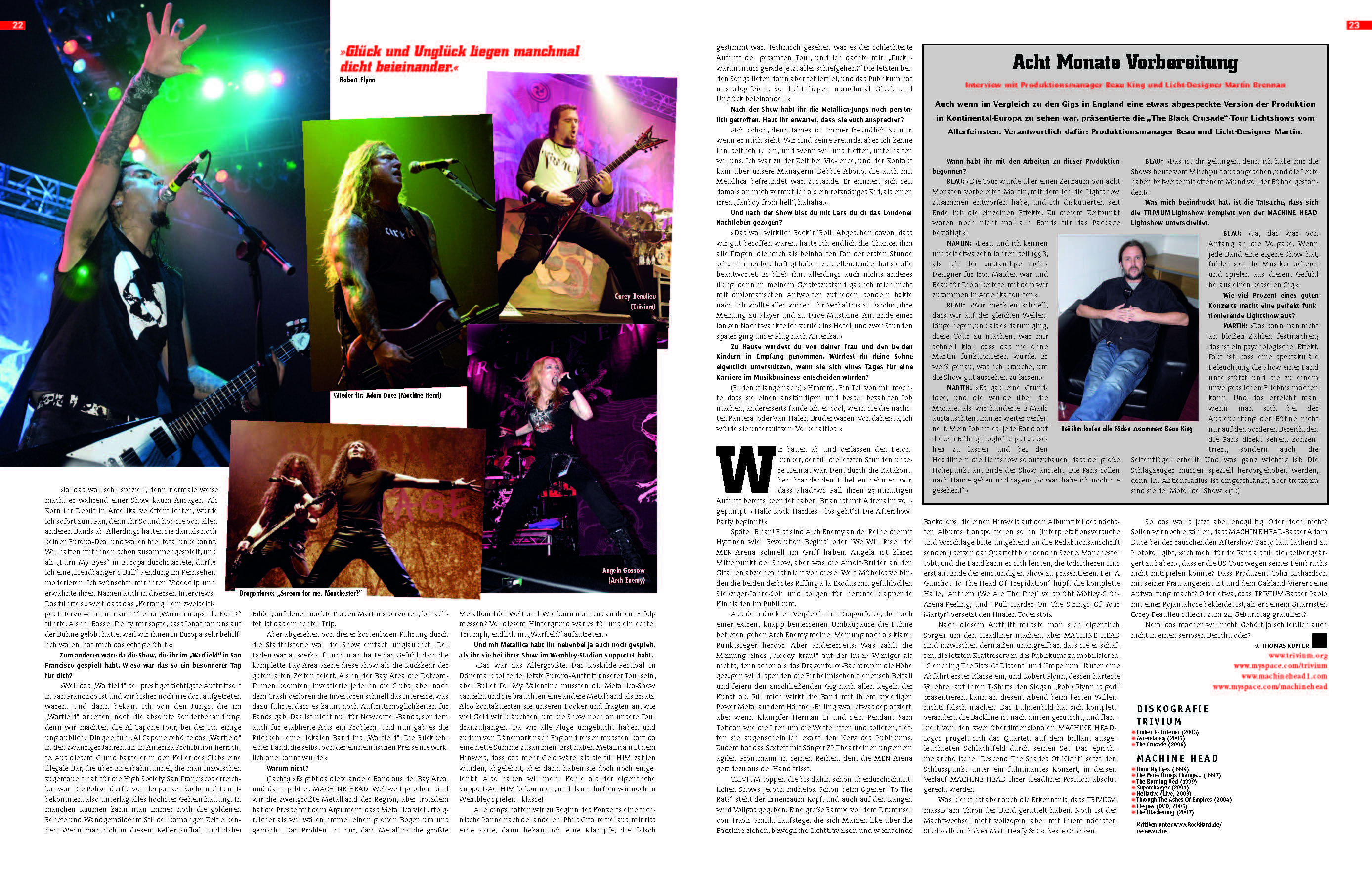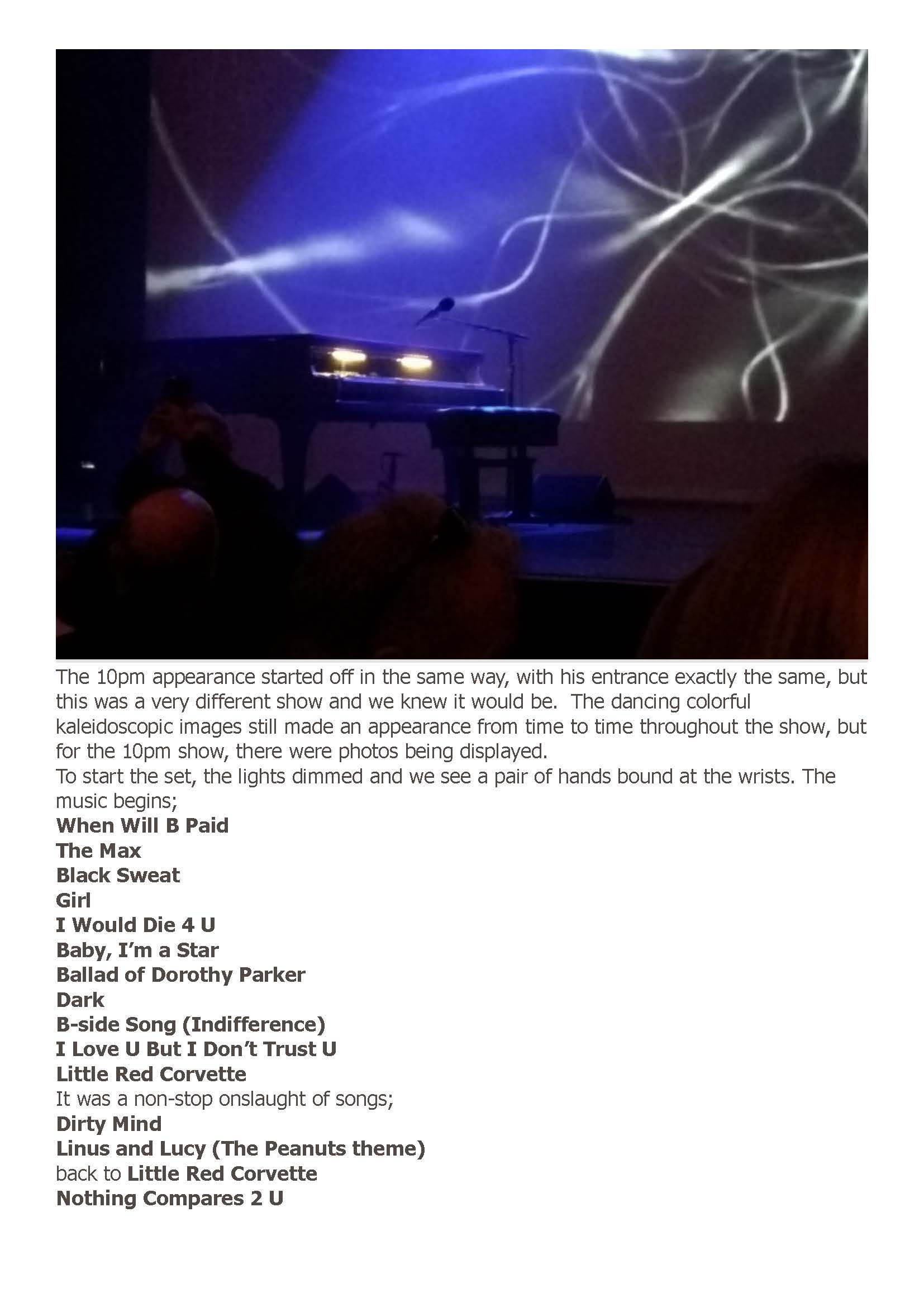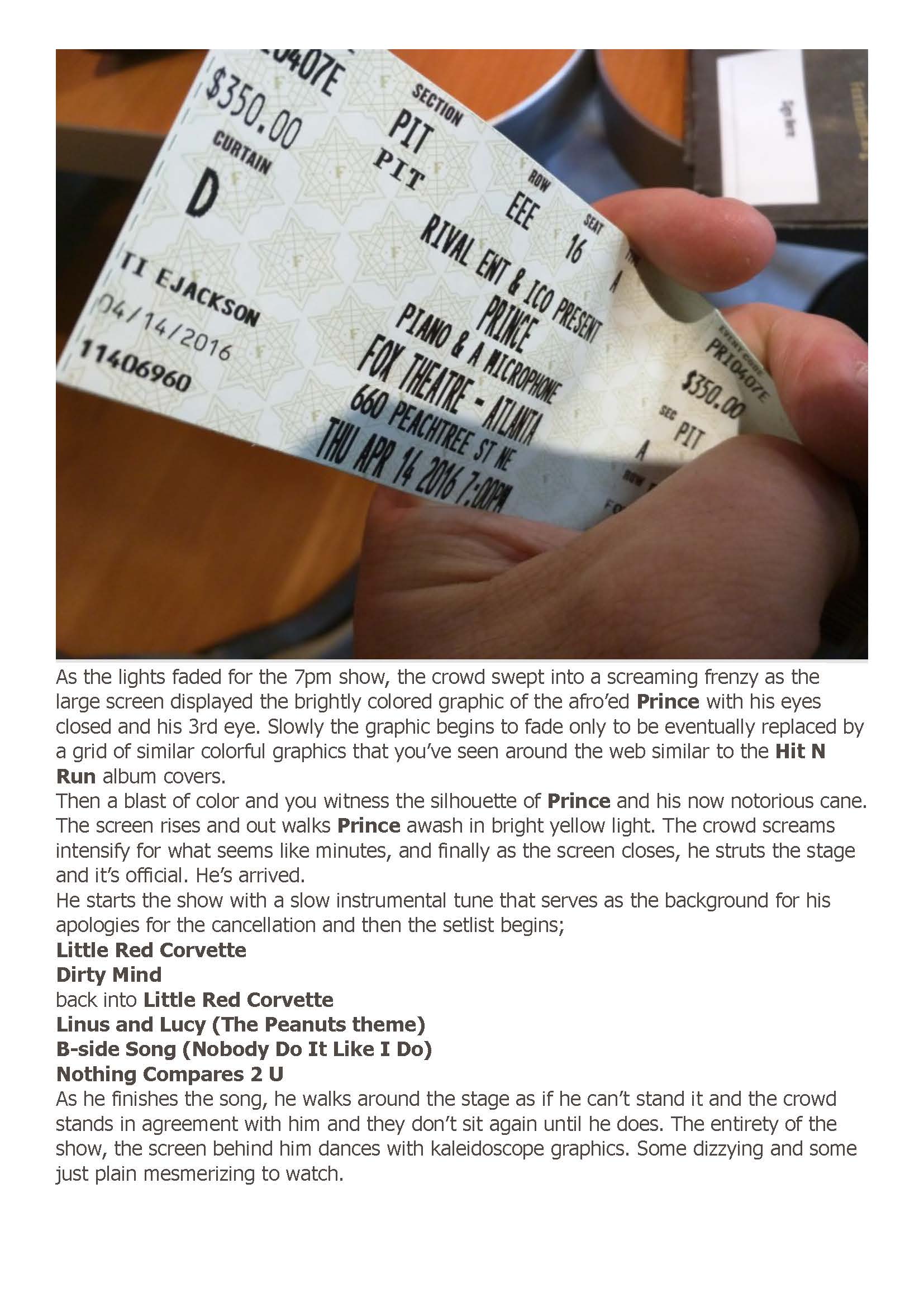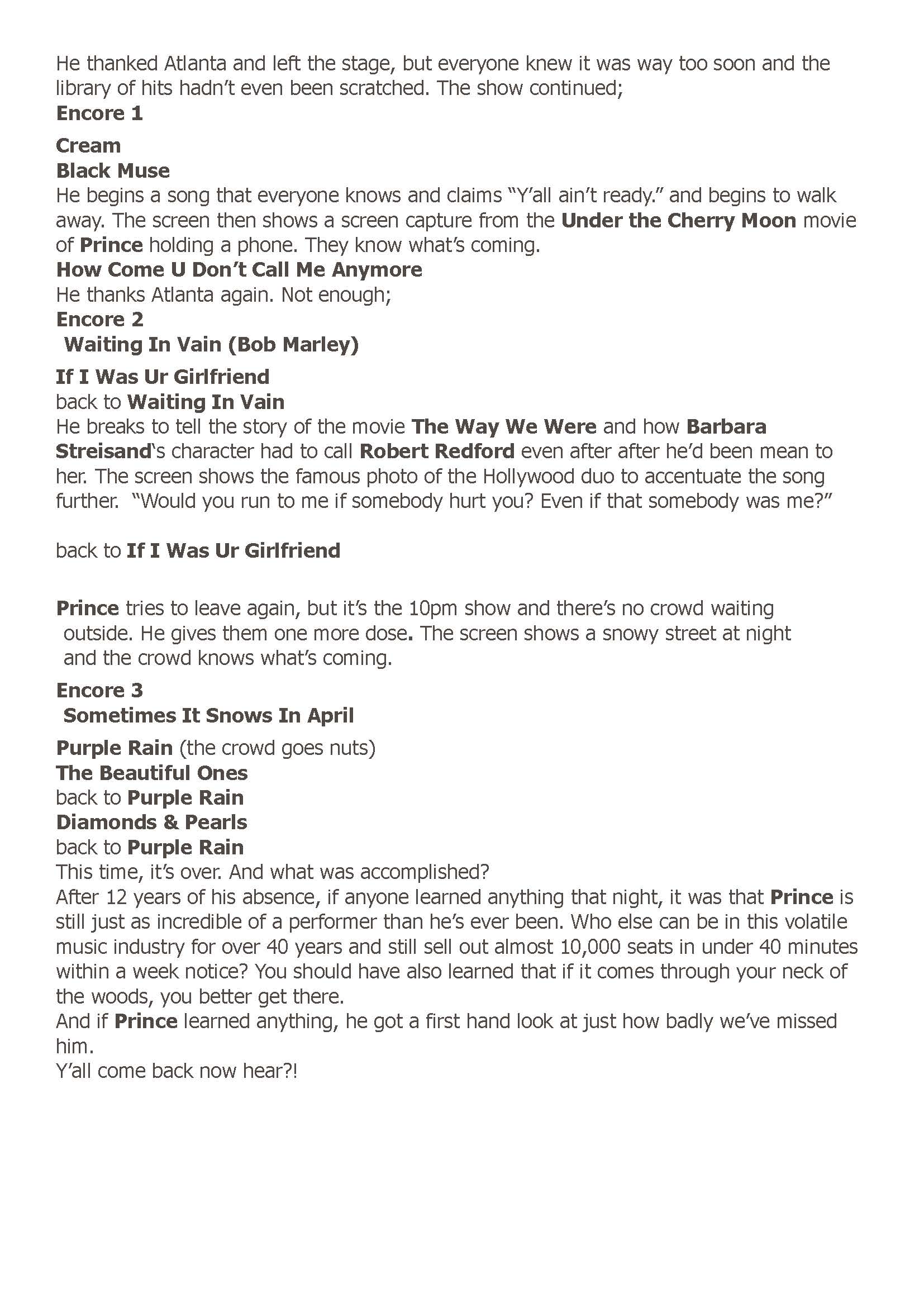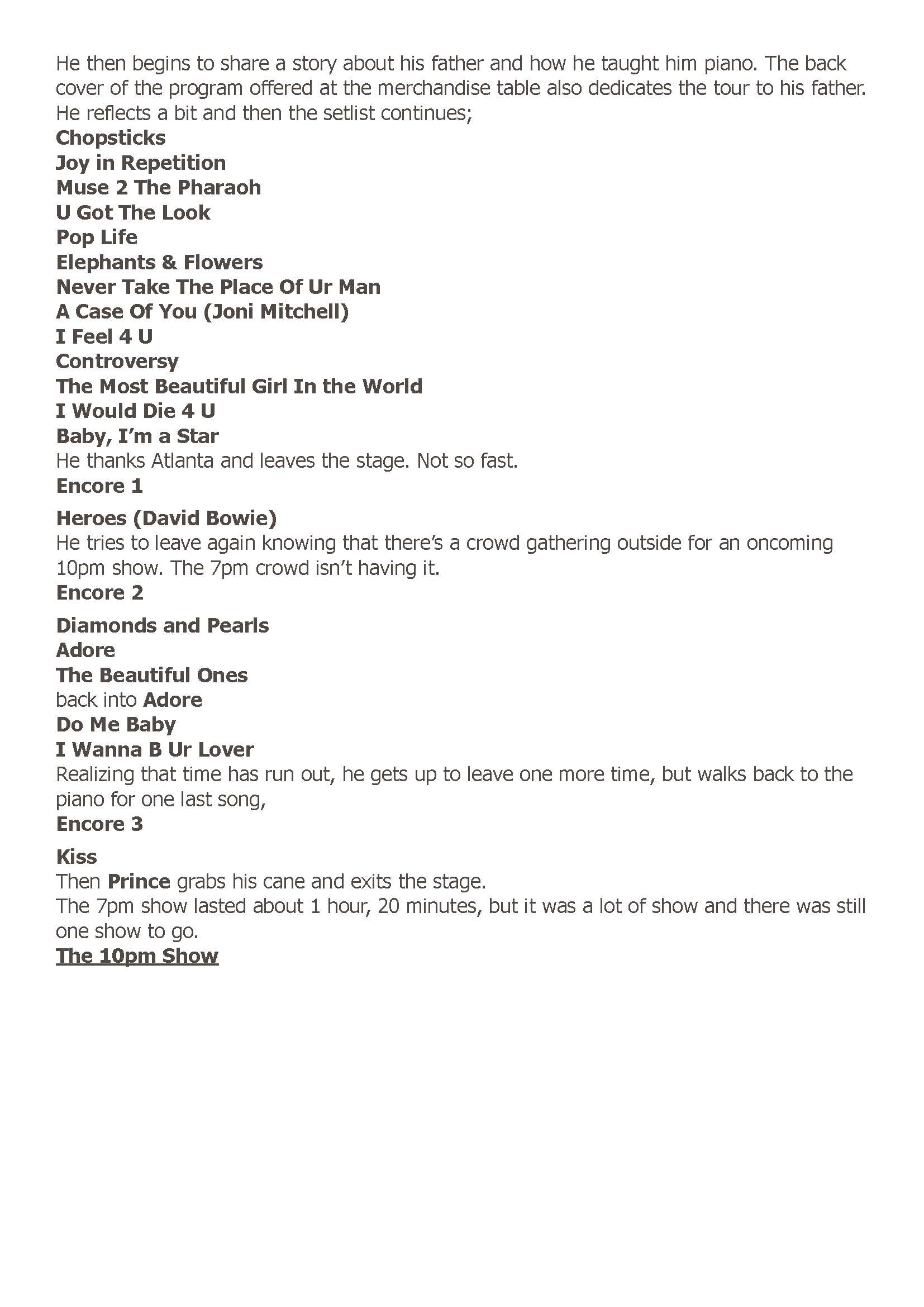Chats with Martin

Questions! Answers! Too many to count but take a look!
Brennan is a "Light Designer", he worked at many shows, since Riverdance to rock bands tours. He has been "Light Designer" with Maiden since Virtual XI World Tour.
Which are the last projects that you worked?
Before the "Gimme 'ED" tour, I had been working on "Riverdance" since the end of the "Brave New World" tour. They fitted in together quite nicely. I was also able to fit in the Clive Burr shows at Brixton, as well as a few one-offs, such as the "Festival of Speed" at Goodwood and a couple of TV commercial shoots.
How is the life on the road?, do it compensate the good moments with to be so far from your family?
Life on the road is hard, but it is all I have ever done for a living, so I do not know anything different. It is hard, but it is fun as well. There are days when you never want to see a gig again, but the good days are brilliant. Working with Maiden is, in many many ways, the best gig I have ever had, because I love the guys in the band, I am a Maiden fan of old, and enjoy the music, and I love the "family" of the crew.
I do the job for many reasons. I'm good at it, I love it, and the adrenalin of the gigs is irreplaceable. I now also have a young family, and touring means that I can keep a roof over their heads. I miss them very much, and so it does get harder to leave home every time. There is a much larger Maiden family, however, like the Chicago Mutants, the Belgians, the Americans, the Japanese, and of course the mad South Americans who travel all over the world to see the band. I is nice to say hello to a friendly face, miles away from home, in the place you least expect to see them!! Thank you all.
Which is the strangest thing that has happened to you in your work?, and the most funny?.
Strangest??? Good question. I think coming full circle with Maiden, to be honest. Coming from being a fan, to working in lights, to seeing that Maiden needed a Lighting Designer (LD), to meeting Dicky Bell and being offered the job, to having my opinions asked for, and even listened to, and deciding how IRON MAIDEN, one of the biggest bands in the world, should look. Great feeling.
As for funny, most of the funny things come from the people you work with. We spend most of the time on stage during the day laughing at each other. We have a very good reputation as a crew for being easy to work with, and having a laugh while we do it.
One time, in Montreal, however, on the "Virtual XI" tour, the rope snapped on the Big Eddie head. It was the big inflatable, and we were doing an outdoor gig with quite a strong wind. The rope broke, and our carpenters were last seen chasing this bouncing plastic light bulb-shaped head across the stage, never to be seen again!!
What do you do when you don’t have to be on the road?, relax only or do you test other systems and "toys" also?
I have 3 beautiful little daughters (aged 5, 3 and 16 months), so I spend all of my time running around after them, so I never get to relax!! I work for other bands, and for lighting companies, so I get to see a lot of other types of lights and rigs. When I don't work, I don't have much to do with rock & roll. I like to keep my distance from it, and spend time with my family or catching up on films, playing cricket, golf or scuba diving.
What is the first thing that you think when during a show you have a blackout?
First thought "OH SHIT!!!" It has happened a couple of times. Once I pulled the wrong fader down, so nothing would work. It was only for a moment, but it seemed like a lifetime! Otherwise, we have blown power supplies, and ,earlier this year, someone on stage knocked the handle of one of the supplies. This killed the desk, but some of the lights stayed on, thank God. We got it all running again very quickly, but it looked very odd!! Obviously, I hate it, because it gets in the way of the show, but you cannot worry about it too much because it is no-one's fault. The band is brilliant, as well, because they understand that problems happen, and as long as you give a good reason, they understand. They take the piss, but they understand!!!
What is the first thing that you think when during a show you have a blackout?
First thought "OH SHIT!!!" It has happened a couple of times. Once I pulled the wrong fader down, so nothing would work. It was only for a moment, but it seemed like a lifetime! Otherwise, we have blown power supplies, and ,earlier this year, someone on stage knocked the handle of one of the supplies. This killed the desk, but some of the lights stayed on, thank God. We got it all running again very quickly, but it looked very odd!! Obviously, I hate it, because it gets in the way of the show, but you cannot worry about it too much because it is no-one's fault. The band is brilliant, as well, because they understand that problems happen, and as long as you give a good reason, they understand. They take the piss, but they understand!!!
What job did you have if you don’t works in this?
The only other things I ever wanted to be were either a cricketer or to swim with sharks as a marine biologist!
Does which is the price approximate of a rig in a "big" production?
Another good question. It depends on which territory we are in, who is the lighting company, what is the length of tour etc. I tend not to get too involved in the money side; that is up to the Production Manager. I am asked to design a rig, which will work within the time available in the working day, fit into 2 trucks, and give the band the big rock look they want and need.
In the last shows that you have worked with Maiden, how many lights, lamps (etc) have the rig?
The "Dance of Death" tour had the following equipment:
48 x bars of 6
12 x bars of 4 ACLs
6 x 8-lites
6 x 4-lites.
18 x Mac 2000 moving lights
20 x Studio Color moving lights
66 x colour changers
20 x single pars
5 x follow spots
The 2004 part of the tour was a smaller rig, and slightly simpler in lay-out, but kept the same kind of look.
Are there many differences between the productions in which you worked?, for example, from Riverdance to Maiden, or is it everything same?
Every production is different, because every artist is different. There were even a lot of changes between "Gimme 'Ed" and "Dance of Death", because the stage sets were different, and the songs they were playing were different, so they needed different things, but having to stay within the Maiden "look". You must give each artist what they want, and each artist should hopefully look different. A metal band would look silly under a lighting rig meant for girly dancers!!
What is the process for the light design of the maiden shows?, for example, how come the idea of the lights in a song like Paschendale?
I know how Maiden should look, and how the audience expects to see the band. Then, I am told the dates, and where we shall be playing. Then the budget comes in to play, and then I am told what songs the band is playing. The band trusts me to do the best job I can, and normally leave me to it. Sometimes, however, the band, and especially Bruce, comes up with ideas, which I have to include in the design. We were able to talk about "Dance of Death", and Bruce being the "narrator". From there came the blue up-lights, and the movers becoming stars when Bruce came up with the line "looking up at the stars", and also the red up-lights when Bruce sang about "walking on the coals". Very simple stuff, but Bruce is very good at hitting the right spot, it gives him something to play off, and it is a slightly different look for a metal band.
"Paschendale" was a big number for the tour. Rod Smallwood wanted the song lit only in "red, white and black"!! From there, Bruce's ideas for the intro tape, the barbed wire and the dummies came up. Rod did not want to see the dummies being put on stage, so the intro tape dictated how the intro should look. There were a lot of dramatic strobing looks into the audience, as well as fleeting glimpses of the crew putting the barbed wire out. When the song actually started, the great highs and lows of the song gave me so much to work with, but it was such a complicated song, that it took a while to remember all of the changes, solos, riffs and big bumps! It is a song I am very proud of, because everyone was very involved with it, and wanted it to look right, and I think that it looked superb. I was even able to get Adrian to stand in the same place every gig for his great riff, half way through the song!! Not easy!
The rest of it involves going for the big changes, and trying to make every song look different, which is not easy with metal, but the band have so much varied material, that the music does a lot of the work for me.
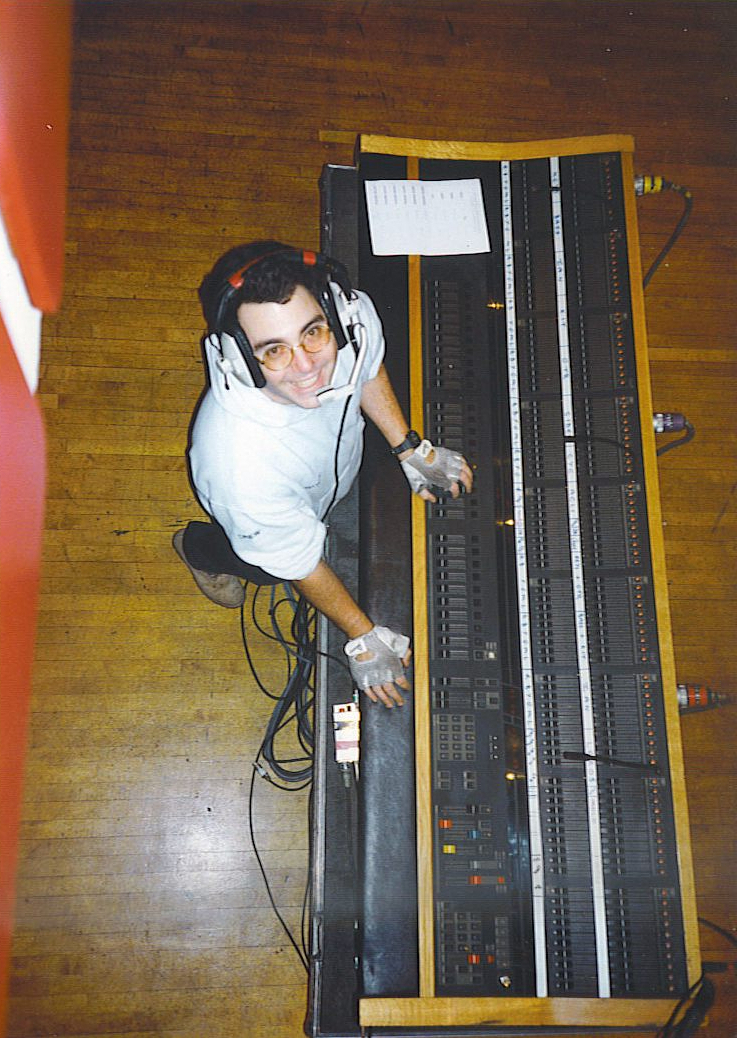
Iron Maiden - Testimonial, 1999
Pre-Production in St John, Canada
After finishing rehearsals in Lille, France, I flew to St John Canada (with a stop over for a couple of days business in New York on the way). St John is a beautiful part of the world, and the people are very friendly, so it made a great place to do pre-production rehearsals, as they have a perfect venue for this kind of thing and we were able to do a warm up gig in the same place.
Pre-production is definitely needed with a brand new big show production like this because everybody has to work at lighting, pyro cues etc., plus obviously on and off stage sound levels have to be sorted so that everybody's satisfied. It makes a big difference to everybody's performance if we are comfortable with everything what's going on around us. We all saw a model of the stage set when we were doing a load of press in Amsterdam back in March, and it looked great, but there is always a worry that it might not turn out as grand as you would like it in reality. We shouldn't have worried - it looks fantastic! The set itself and the lights are superb.
So then it was a question of getting down to sorting our on stage monitor levels, which surprisingly didn't take long - considering there's six of us! We just ran through a few songs and we have a fairly methodical way of doing things which avoids too much chaos ( I suppose we ought to know what we're doing after the amount of tours we've done!)
The following day we were able to watch the show from out front, the only time we ever get to see it, apart from videos! Doug Hall, our ever present sound engineer, made a tape of the set in running order so that we could all watch the show with lights, production, pyro etc. and make notes of anything we didn't like, or wanted to add or whatever, as the songs were playing through the PA. I made notes throughout and afterwards the band and Rod discussed things before going through them with Martin Brennan, our lighting designer, and Dick Bell, our production manager. Martin had to programme any lighting changes, cues etc. into his computer and the set production people had to fine tune a few bits of the set. It was late, so we decided to have another run through the next morning, which was also the day of the show. We were much happier with everything after the second run through, although we still made notes, but not as many. Nicko's drums needed more light, so changes were needed again there, possibly hiring a few extras to sort the problem, but over all everything looks spectacular and Martin has done a great job, yet again!
Everybody's put so much time and effort into making this great, so thanks to all concerned. A special mention has to go to Alan Chesters, who has surpassed himself with the stage set - Ed Hunter lives!
Nicko mentions the gig in his piece, so all I'll say is that we were nervous, a little rusty, but it went very well for a first one! Hope you enjoy the show when we're in your town.
See you soon (Montreal tonight!)
Cheers Steve Harris 13/7/1999
Crew Cuts - The Shend interrogates... Martin Brennan lighting designer
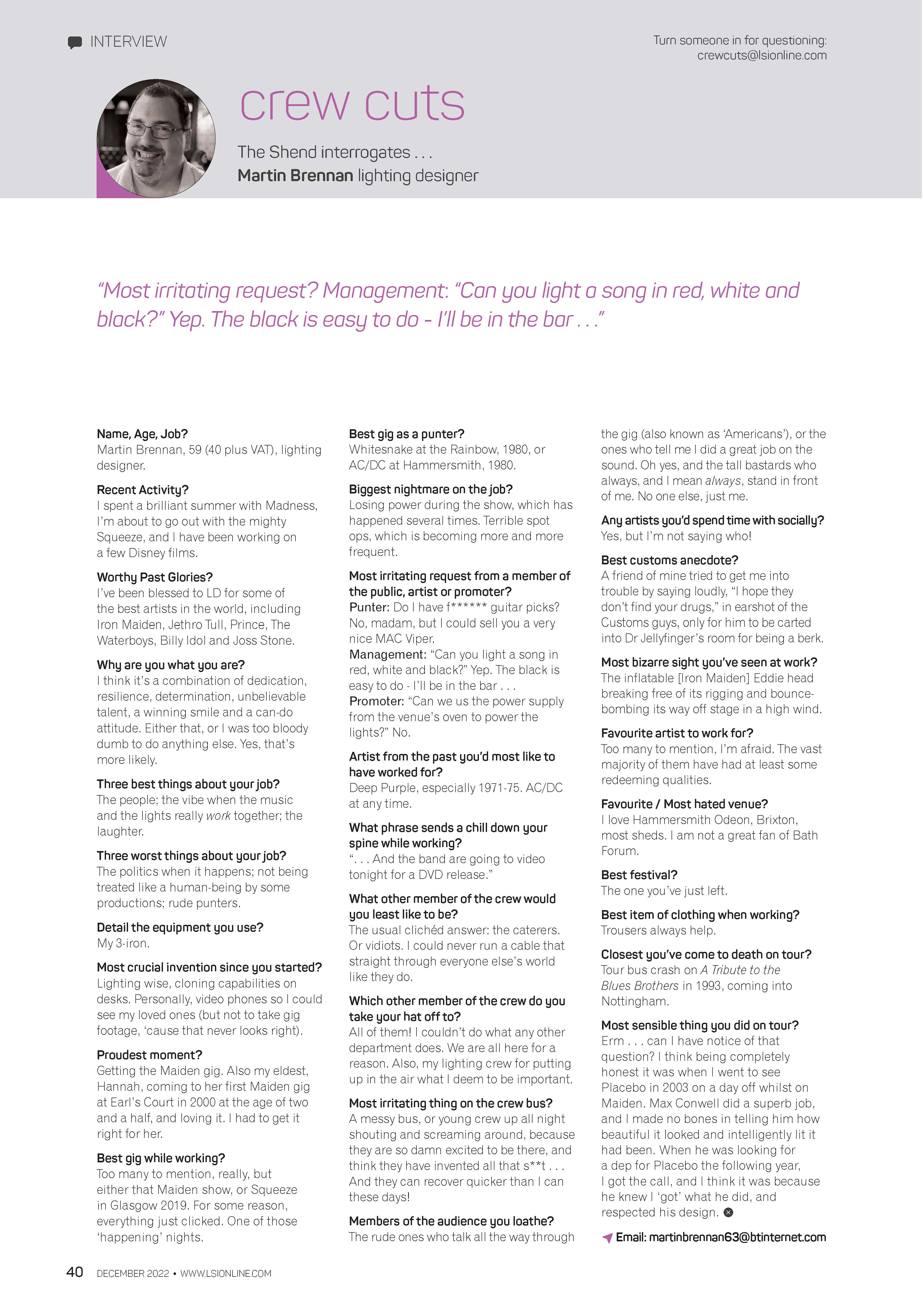
Iron Maiden : Dance of Death Review, 2004
LIGHTING
Martin Brennan's lighting design for Dance Of Death is nothing short of a Par-tastic exhibition of all that is great and good about traditional arena rock. His mostly conventionals-based rig features 48 bars of six, 12 bars of four ACLs, 20 single cans for truss toning/set lighting, 62 Wybron Coloram colour changers and five follow spots. Enhancing the system, but not detracting from it, are 18 Martin MAC 2000s and 20 High End Studio Colors.
Brennan has been delighted to receive votes of confidence from his peers who have been entertained by what is one of the biggest displays of conventional lighting this side of Queen! He said: "I've had so many people come up to me from other bands, including Justin Timberlake's crew, telling me they hadn't seen a full-on rock rig for years.
"Few bands in this genre tour such a huge production in terms of the scenic elements. It seems to be a thing of the past, but a fine tradition to be part of all the same. Certainly you don't see many shows with 400 Par cans anymore. But so many people have said that it's a great thing to see. The moving lights are just used to complement them. As good as moving lights are, they can't create a classic ACL fan or a huge 'bar of six' look in the same way. It's a lot of work but I'm very proud of the results."
The MAC 2Ks were specified as a result of a colleague's recommendation, and Brennan has been impressed with their reliability, brightness and even colour temperature from unit to unit. "They're physically the right size for me and they work well in conjunction with the Studio Colors. If I'd used x.Spots attached to the moving pods it would have been completely wrong, because as units they are too big for the job. So the 2Ks are definitely giving me everything I want.
"I originally wanted to use the Studio Colors as wash lights but because the set is so strong I had to re-think it all during production rehearsals. I'd programmed a couple of songs without the set in situ and when the set arrived it was just wasted. So I ended up using the 2Ks more as workhorses for set lighting rather than simply complementing the Par cans. It's stretched me because I've had to get a lot more looks from the lights than I had originally planned.
"There's also more strobing going on than I've ever done before because it feels so appropriate on some of the more dramatic new pieces like 'Paschendale'. It's a shorter set but I'm drained at the end of every show because of the sheer intensity."
Brennan's choice of control desk for this tour is a WholeHog II. "Flying Pig have always produced marvellous desks," he commented. "We were doing festivals this year on the Give Me 'Ed Til I'm Dead tour and I could have done the shows on the Avo desk but it would have been a little harder for me. The cloning facility on the Hog and the 3D spacing which I'm using to programme the moving lights are godsends. I'm using the desk as a kind of hybrid between an Avo and a Hog - not much cue stacking as such, but using the flash buttons in an Avo way and using as many facilities as appropriate from a Hog background."
As a parting shot, Brennan was keen to praise the work of one of his lighting contemporaries. Whilst touring in Europe, he had time to check out the latest Placebo production at the Fila Forum in Milan, and made special mention of Max Conwell's design. "The show looked superb," said Brennan. "In fact, I haven't seen Max lighting better!"
Cover Story : Rock Hard
Prince : Atlanta Review
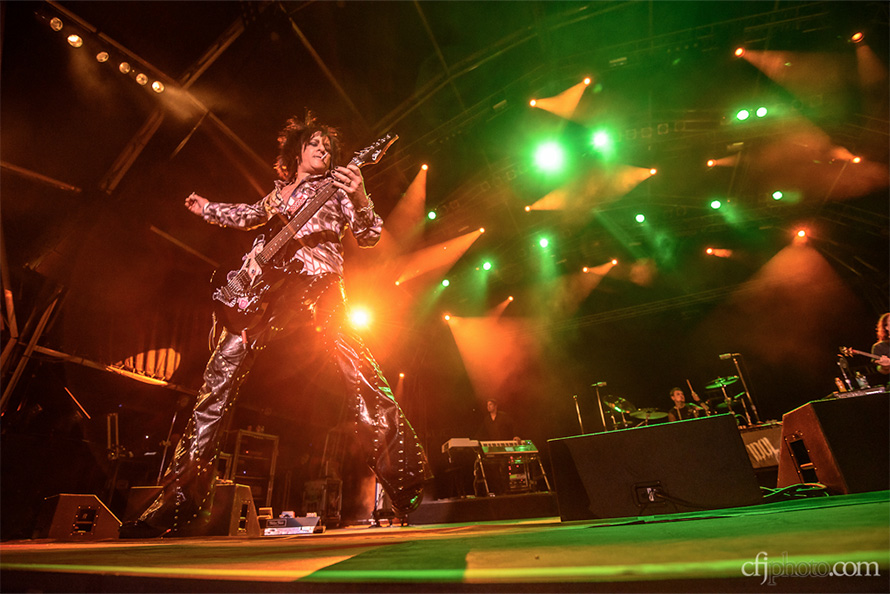
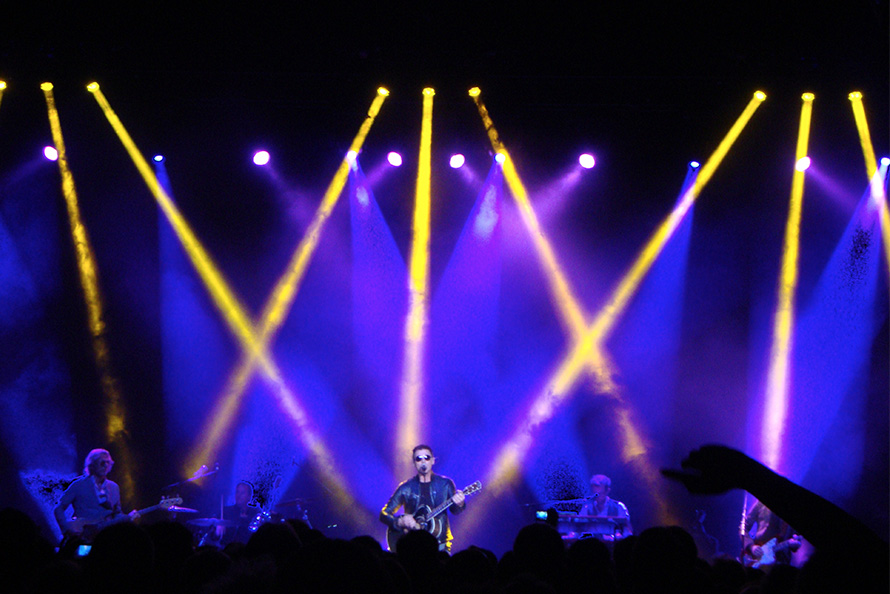
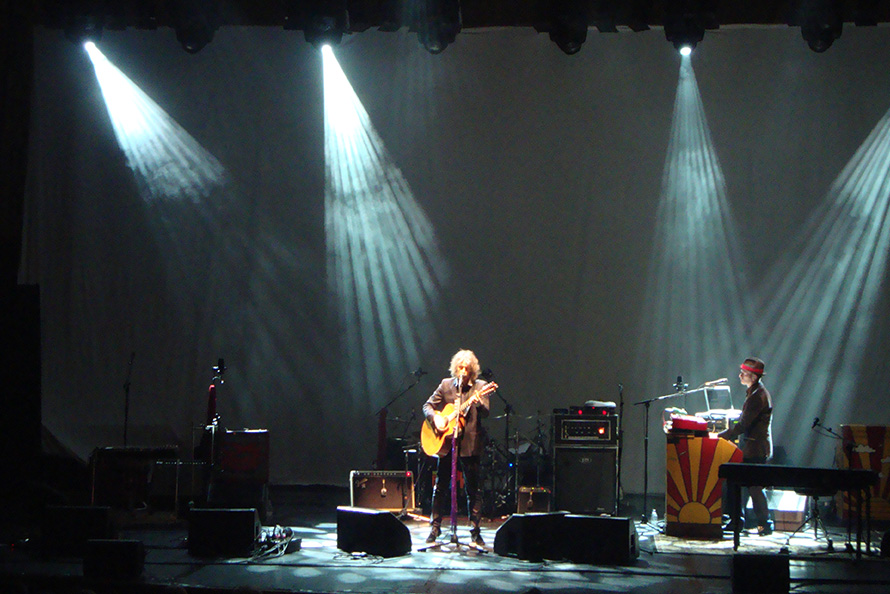
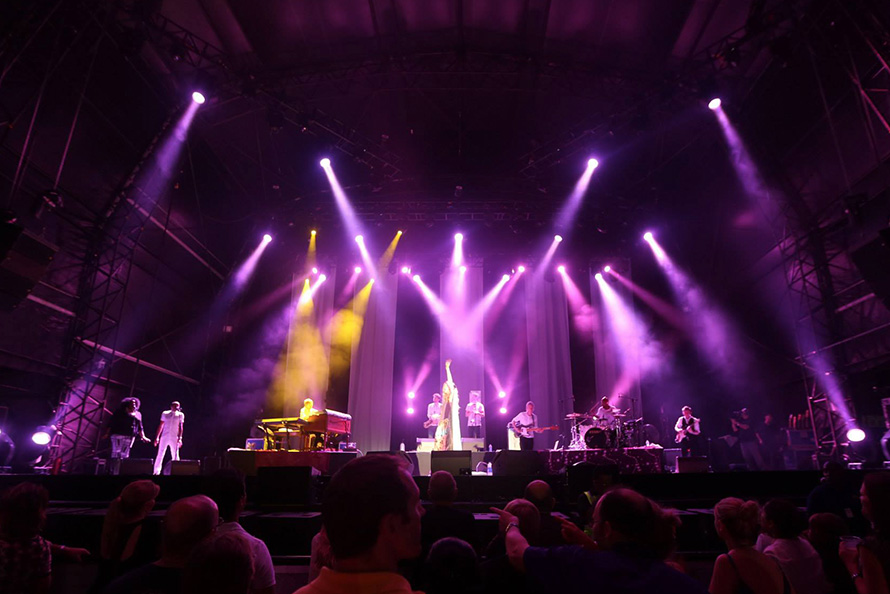
Squeeze: Still Cool for Cats, 2019 Review Extract
As Jabir (Squeeze Production Manager) mentions, it is Martin Brennan who has had his fingers on the Hog Full Boar 4. A renowned veteran of design and operation, Brennan began his career in theatre after training at the prestigious college the Royal Welsh College of Music & Drama but moved into touring with nine years of Iron Maiden and the very last shows of Prince’s career as just a couple of major ticks on his CV. Like Squeeze LD Daniel Bocking, Brennan has also begun to work in the television and film industry with a stint as Lighting Director at Sky and the new ‘Terminator’ film being the latest endeavour.
Much of Brennan’s recent career has been away from live touring but he is clearly in his element as he clarifies his reasons for jumping into the operator’s seat: “We all know that the boundaries between lighting genres have become increasing blurred in recent years; there is a constant crossover between live performances, television and theatre now. I enjoy each one but secretly, live touring is what still really floats my boat. As Des has said, the American leg sent us to a variety of different types of venues, so augmenting house rigs and working around stage widths and heights was the order of the day. We had some Vipers, some Auras, a truss and a video screen and took it from there. It certainly keeps you on your toes!”
“Back in the UK, Dan has obviously seen my work before so we were both confident that I would be able to reflect the Squeeze ‘look’ on stage, whilst putting so much of myself into it- all with Dan’s OK, obviously. He has been Squeeze’s LD for a long time, some eleven years, but for this outing, schedules just collided as they tend to do at the most inconvenient of times. This is a band that places a huge value on loyalty and trust, so Daniel was asked to design and I was happy to both collaborate and operate.”
In many ways, this really became a co-design. A good-natured discussion between Bocking, Brennan, Jabir and Gary Westman the Tour Manager resulted in a tweak here and there to accommodate the need for venue flexibility and still maintain Bocking’s concept as Brennan explains, “I suggested that we use drop arms on the back truss. That seemed to be a lightbulb moment for everyone; everything flowed after that. The drop arms gave me a chance to make the whole show look so much bigger than it really was- they tapped into that lovely three-dimensional depth that you don’t always get from three straight sticks. Combined with Dan’s idea for the floor package on 5’ truss towers, the whole thing looked enormous when necessary. There was one nice review that mentioned that ours was an ‘arena-sized production’. It is not, but we were all very proud that it did indeed look far bigger than it was.
The design is essentially three straight trusses but with downward drop arms to provide side lighting left and right. This rather clever configuration allows for different stage widths and depths and removes the need for side trussing or frames that would invade the band space (a full seven piece band) on a tight stage. A single front truss removes the need of any sort of followspot. The spec remains very much a Martin Mac Viper and Martin Mac Aura rig with the addition of some Claypaky Sharpy Washes and Molefays. An uncomplicated, straightforward but very efficient combination that Brennan uses adroitly.
TPi Awards 2009 Review Extract
